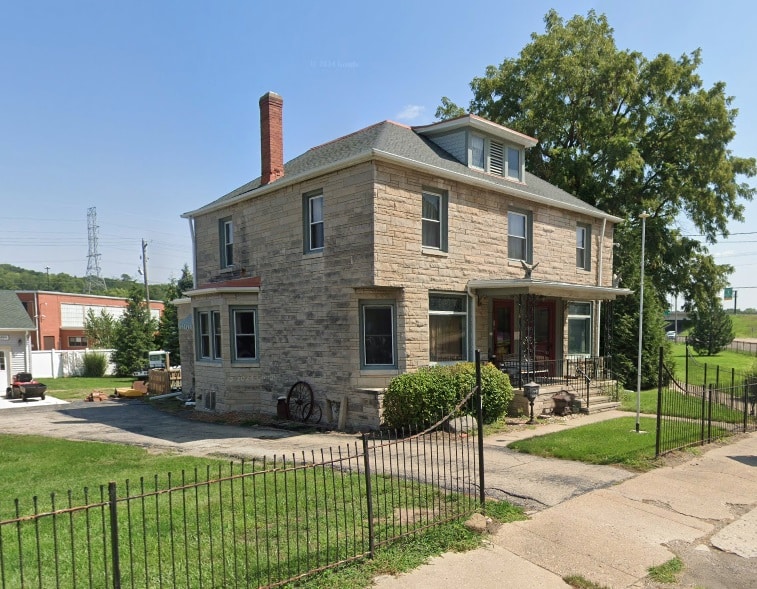This is a reprint of a “From the Local History Room” column that first appeared in December 2014, before the launch of this weblog.
Jesse Black, pioneer of Sand Prairie
By Jared Olar
Local History Specialist
Locally prominent in the legal profession during the first three-and-a-half decades of the 20th century was Jesse Black Jr., an accomplished attorney and judge in Tazewell County circuit court.
Jesse Black Jr., born 1870 in Green Valley, was one of the key players in the drama of the jail beating and death of Austrian immigrant Martin Virant, which was serially recounted in this column in 2012 and 2013. Black was one of the attorneys who successfully defended the county deputies whom Virant had publicly accused of beating and torturing him.
Prior to the Virant case, Black had served as a judge, and before that he served a single term in the Illinois House of Representatives following his election in 1899. Jesse Black Jr. died Oct. 11, 1935, at age 64.
Though he was a “Jr.,” he was the grandson, not the son, of Jesse Black Sr. His father was William Black, born 1849 in Pennsylvania, the son of Jesse Black and Mary J. Johns. The elder Jesse Black was one of the prominent pioneer settlers of Tazewell County, though he arrived in a later wave of migration.

In his 1905 “History of Tazewell County,” pages 980-981, Ben C. Allensworth included biographies of three generations of the Black family – Jesse Sr., William, and Jesse Jr. The biography of the senior Jesse is somewhat lengthy and traces the Black family genealogy to its American founder, Jacob Black, who came to America in 1679. Following are excerpts from Allensworth’s biography of Jesse Black Sr.
“Jesse Black, who must ever be regarded as one of the most liberal-minded and helpful of the pioneers of 1854, and to whom his fellow farmers in Sand Prairie Township are indebted for an example of moderation and well-earned success, is perhaps as well informed concerning the early days of this section as any settler who owes his native allegiance to the State of Pennsylvania. . . .
“When Mr. Black arrived in Tazewell County, the Government land had all been taken up, but a spirit of newness characterized the country, the entire prairie being without a tree of any description and fences being as yet strangers to the landscape. On their way to the nearest trading posts, the settlers took the shortest cut across lots, for established roads were also matters of the future, and ownership seemed to be more in the nature of a selection than of purchase. At that time, Mr. Black was twenty-nine years old, and in a position to appreciate any advantage that life might hold for him.
“The subject of this sketch was born in Huntingdon County, Pa., February 7, 1825, the son of Jacob, and grandson of John Black, both natives of the Quaker State. His great-grandfather, also John, was born in Easton, Pa., and removed to Crawford County, Ohio, where he engaged in farming. At one time he was the owner of the land on which the city of Bucyrus now stands. Going still further back it is learned that Jacob, the founder of the American branch, emigrated to America, on account of religious persecutions, in 1679. Mr. Black’s father, Jacob, was born near Williamsburg, Pa. His mother, formerly Sarah Neikirk, and his maternal grand-father, Abram Neikirk, were also natives of the Keystone State. On October 20, 1846, Mr. Black was married in his native State to Mary J. Johns. She was also born in the Keystone State, on January 28, 1830, and several children had been added to the family ere the overland journey was undertaken in 1854. Very little money remained in the father’s pockets, when he arranged to purchase the first farm of 160 acres, but the indebtedness was entirely met by the proceeds from the first crop of wheat, which far exceeded his expectations, and which was followed by others equally profitable and encouraging. He continued to reside in the same place until 1883, when he purchased several hundred acres with the fruits of his toil, making in all an imposing tract of fertile land. . . .
“For many years Mr. Black has been prominent in the Old Settlers’ Club of Tazewell County. His activity in the Methodist Church covers many years, and was particularly noticeable during the construction of the present church edifice, in which he is a trustee. Eleven children have been born to Mr. and Mrs. Black: John W. (deceased), William, Sarah J., Henry (deceased), Almon, Francis M., Newton, George (deceased), Charles, Edward and Jessie May. Mr. Black is a stanch Republican, and though never an office-seeker, has served as Supervisor of his township. He is a noble, upright man, sympathetic and generous, and as he comes and goes in the community of which he is an integral part, enjoys the consciousness of a universal and an abiding good-will.”
Jesse Black Sr. died on Feb. 3, 1907, on his farm in Sand Prairie Township. He and his wife Mary are buried together in Green Valley Cemetery.










